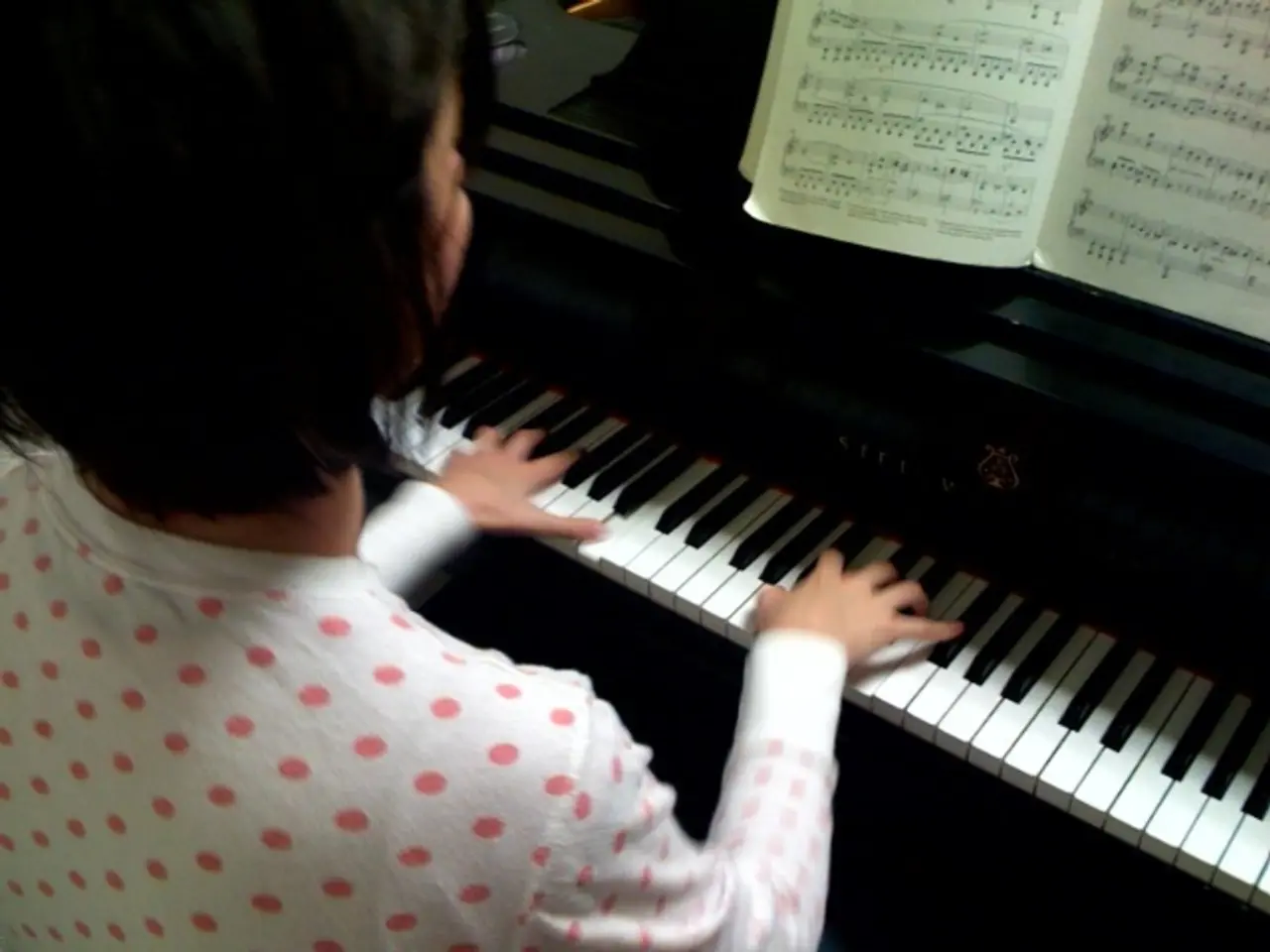Pianoforte Aural Assessment - Grade Five (Abrsm)
In the world of classical music, the ABRSM (Associated Board of the Royal Schools of Music) Grade 5 Aural Tests present a unique challenge for students. To excel in these tests, targeted practice is essential, particularly when it comes to identifying and describing the characteristics of music style, texture, structure, and historical context.
For those preparing for the Aural Tests, especially the section on musical features, style, and period questions, a strategic approach is key. Here are some effective preparation methods:
- Embrace Technology: Utilize aural training apps like AURALBOOK for ABRSM, which offer exercises on recognizing texture, structure, character, style, and period-related features. These apps provide multiple-choice questions and detailed explanations, including historical background of pieces, helping learners understand why certain answers apply or not.
- Familiarize Yourself with Musical Terms: Become well-versed in commonly used musical terms and features frequently tested, such as texture types (monophonic, homophonic), structural forms, stylistic traits of Baroque, Classical, Romantic, and other periods, and typical characteristics of styles or genres.
- Listen, Listen, and Listen Some More: Regularly listen to exemplar pieces spanning different periods and styles to internalize the musical language and context, enabling identification of style and period features when presented in the test.
- Singing and Clapping Exercises: Focus on rhythm and pitch through singing and clapping exercises to develop aural accuracy, which helps in identifying nuances in different styles during exams.
- Guided Practice Sessions: Engage in guided practice sessions or lessons with teachers experienced in ABRSM preparation who can provide personalized feedback and explanations tailored to Grade 5 aural test requirements.
The Grade 5 Aural Test itself consists of three parts:
- Melody Recall: In the first part, students are required to sing or play from memory a melody that is heard twice, no longer than 4 bars, and in a major or minor key up to three sharps or flats.
- Improvisation: The second part of the test requires students to sing six notes from score in free time, with the option to sing in treble or bass clef.
- Analysis: The third and last part includes answering questions about dynamics, articulation, tempo change, tonality, character, and style and period.
To better understand the style of Baroque music, listening to composers like J.S. Bach, Handel, Scarlatti, Couperin, Rameau can be highly beneficial. Baroque music is characterized by an energetic and lively rhythm with a dance-like melody, imitation between voices, and an emphasis on ornamentation such as trills, turns, and mordents.
In contrast, Classical music features regular and clear phrases, an elegant and refined melody, and simple texture. Composers such as Mozart, Beethoven (early period), Clementi, and Haydn are worth listening to in the classical period.
The Romantic period, on the other hand, is characterized by the use of rubato and flexible tempo, lyrical and dramatic melodies, extensive use of pedal, thicker texture, and wide use of dynamics and different nuances of the same volume. Some composers to listen to in the Romantic period include Brahms, Chopin, Grieg, and Schumann.
Lastly, 20th-century music is characterized by rhythmical compositions with the use of syncopation and jazzy ideas, discordant harmonies and various chords, and sudden dynamics changes. Some composers to listen to in the 20th century include Bartók, Debussy, and Prokofiev.
By following these preparation methods and understanding the unique characteristics of different periods, students can confidently approach the ABRSM Grade 5 Aural Tests.
- To enhance one's understanding of Baroque music composition, consider taking piano lessons from a teacher who specializes in this period and focusing on repertoire from composers like Bach, Handel, Scarlatti, and Couperin to help foster a deeper appreciation for the dance-like melody, imitation between voices, and ornamentation common in this era.
- For those seeking to explore online-education resources for self-development, look for video courses and lectures on music history that offer insights into the unique features of Classical music. By delving into the works of Mozart, Beethoven, Clementi, and Haydn, learners can cultivate an ear for the elegant, refined melodies, clear phrases, and simple textures that defined this period.
- To excel in the Romantic period section of the ABRSM Grade 5 Aural Tests, engage in entertainment that showcases lyrical and dramatic melodies, extensive use of dynamics, and wide nuances of volume, such as listening to performances or watching concerts by composers like Brahms, Chopin, Grieg, or Schumann. This exposure will aid in identifying the thicker textures, use of pedal, and flexible tempo often associated with this music style.




